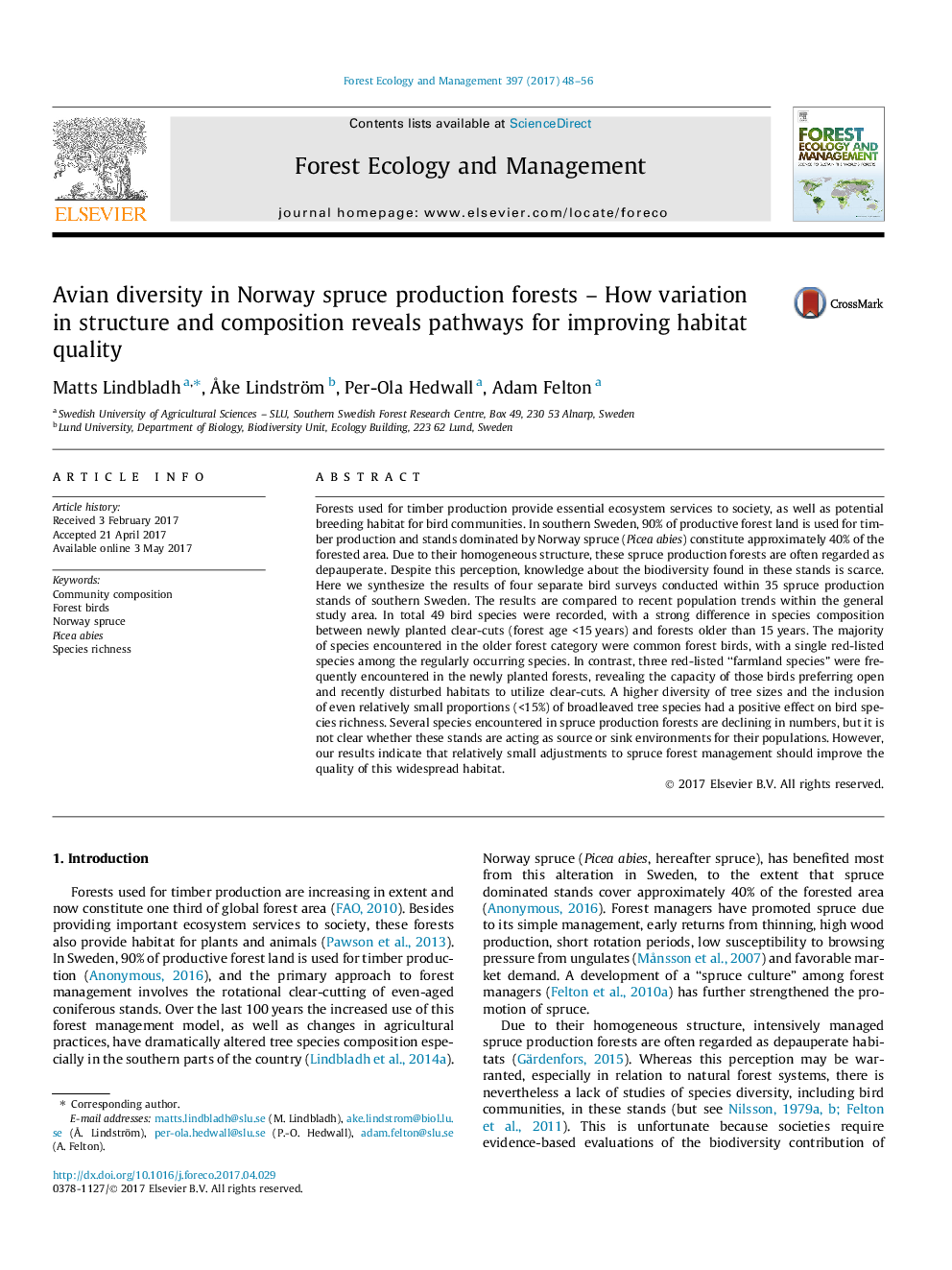| کد مقاله | کد نشریه | سال انتشار | مقاله انگلیسی | نسخه تمام متن |
|---|---|---|---|---|
| 6459345 | 1421361 | 2017 | 9 صفحه PDF | دانلود رایگان |
- Biodiversity assessments in dominant production forest types is often lacking.
- We synthesized results of bird surveys in Sweden's Norway spruce production stands.
- Whereas common forest birds dominate, rare and decreasing species were also found.
- Broadleaf trees and increased structural complexity increased bird species richness.
- Some adjustments to forest management would readily benefit avian biodiversity.
Forests used for timber production provide essential ecosystem services to society, as well as potential breeding habitat for bird communities. In southern Sweden, 90% of productive forest land is used for timber production and stands dominated by Norway spruce (Picea abies) constitute approximately 40% of the forested area. Due to their homogeneous structure, these spruce production forests are often regarded as depauperate. Despite this perception, knowledge about the biodiversity found in these stands is scarce. Here we synthesize the results of four separate bird surveys conducted within 35 spruce production stands of southern Sweden. The results are compared to recent population trends within the general study area. In total 49 bird species were recorded, with a strong difference in species composition between newly planted clear-cuts (forest age <15Â years) and forests older than 15Â years. The majority of species encountered in the older forest category were common forest birds, with a single red-listed species among the regularly occurring species. In contrast, three red-listed “farmland species” were frequently encountered in the newly planted forests, revealing the capacity of those birds preferring open and recently disturbed habitats to utilize clear-cuts. A higher diversity of tree sizes and the inclusion of even relatively small proportions (<15%) of broadleaved tree species had a positive effect on bird species richness. Several species encountered in spruce production forests are declining in numbers, but it is not clear whether these stands are acting as source or sink environments for their populations. However, our results indicate that relatively small adjustments to spruce forest management should improve the quality of this widespread habitat.
Journal: Forest Ecology and Management - Volume 397, 1 August 2017, Pages 48-56
